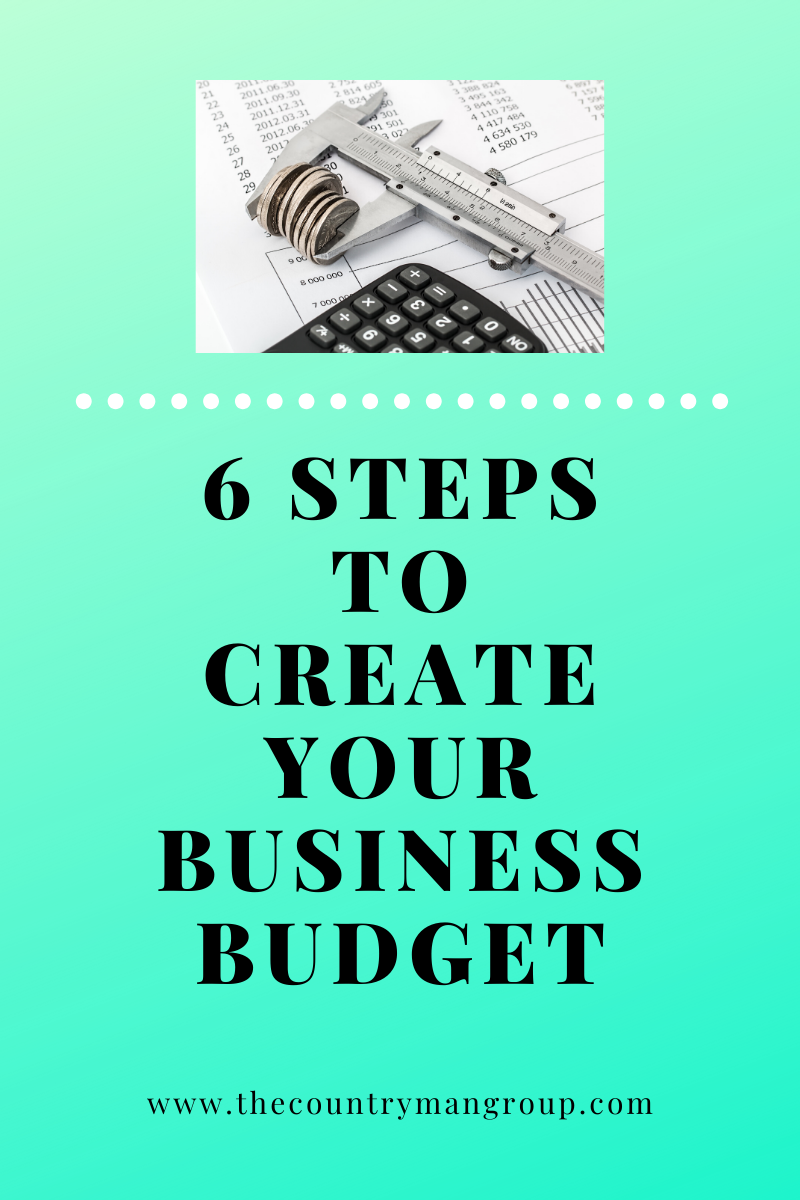6 Steps to Creating a Business Budget
- Lela Countryman
- Jul 14, 2020
- 3 min read
Budgeting may be an important step you have been missing to help manage your cash flow. Cash flow can make or break your business. Many business owners find this daunting and avoid it because they don’t see the value in doing it. Having a budget and sticking to your budget can help you track historical performance, manage your revenue, expenses, and cash flow, and eliminate wasteful spending. In a previous post, we discussed the Financial Success Roadmap and the benefits of budgeting. If you still aren’t convinced a budget is beneficial, take a look at this post and then come back here to learn more about creating your budget.

Here are six steps to creating a business budget:
1. Examine Your Revenue
The first step is to examine your revenue. Revenue is any income source that comes into your business. You will want to review your historical revenue by month to account for fluctuation in revenue throughout the year. You will also want to review your business goals you have for the year by month and account for that potential growth in revenue for the following year.
2. Determine Your Fixed Expenses
The second step is to determine your fixed expenses. These expenses include any operating expenses that are necessary and on a recurring daily, weekly, monthly, or yearly basis. These expenses will be different depending on the industry of your business. Plan for expenses that may be affected by potential growth in your business.
Examples of fixed expenses may include:
· Rent
· Debt Payments
· Depreciation
· Taxes
· Insurance
· Dues and Subscriptions
· Salary
3. Account for Variable and One-Time Expenses
The third step is to account for variable and one-time expenses. Variable and one-time operating expenses are such expenses that change based on the level of your revenue or only occur one time. You may also have variable and one-time costs that don’t directly relate to operations but are beneficial to the success of your business. Ensure that you are including any expenses that may increase if your goals are to grow your revenue throughout the year.
Examples of variable and one-time may include:
· Payroll (other than salary)
· Office Supplies
· Utilities
· Training and Education
· Meals
· Advertising/Marketing
· Office Equipment
· Travel Expenses
4. Prepare a Contingency Fund
The fourth step is to prepare a contingency fund. This contingency fund should be a separate account where a percentage of your revenue is set aside for unexpected expenses. This percentage or fixed amount will vary based on your industry. A business with lots of equipment may want more in their contingency fund than a service-based business that may only have computer equipment. This will allow unexpected expenses to be paid for using these funds when cash flow may be low.
5. Input Your Budget into QuickBooks
The fifth step is to input your budget into QuickBooks. To input into QuickBooks, you must have QuickBooks Online Plus or Advanced. If you have QuickBooks Online Self-Employed, Simple Start or Essentials, you can use other budgeting tools or Microsoft Excel. This will add a little bit more of a challenge when it comes to the next step, but either way will work. Click here if you would like to learn more about creating and importing your budget into QuickBooks Online.
6. Make Your Budget Efficient
The sixth and final step is to make your budget efficient. Now that you have a budget, you need to use this budget throughout the year to make it work for your business. By using the budget feature within QuickBooks Online, you can run reports each month to determine your budgeted amounts and your actual expenses. This will allow you to examine your actual revenue and expenses compared to your budget. This examination can show you where potential overspending is occurring, and you can further investigate the higher costs. You will want to review your budget each month and make necessary adjustments for the following months based on actuals from the previous months and potential growth in the coming months. This step is crucial if you want to make a budget work for your business.
Budgeting may not be the most enjoyable thing you do in your business but is greatly beneficial to managing cash flow within your business. These 6 steps will help you get started on your budget. If this process still seems daunting and overwhelming, you are not alone. It may be valuable to hire a bookkeeping professional to get you started and help you manage your budget each month.
Next week, we will be discussing accounting terms you need to know. Accounting jardon may seem foreign to you, but as a business owner you should know the basics.
Comments